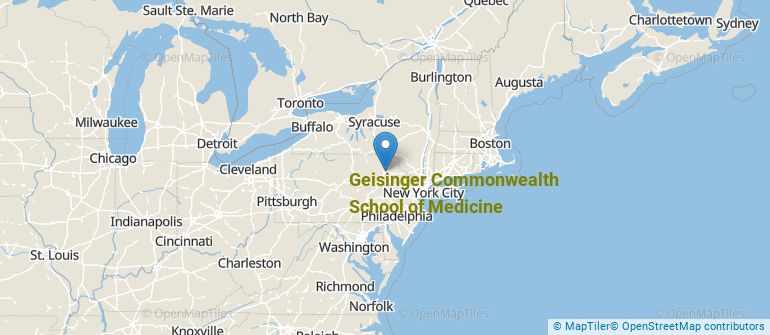 by our College Data Analytics Team
by our College Data Analytics TeamExplore the best ranked schools for the programs you are most interested in.
Geisinger Commonwealth was not ranked in College Factual's Best Overall Colleges report this year. This may be because not enough data was available.
See all of the rankings for Geisinger Commonwealth School of Medicine.
Since Geisinger Commonwealth School of Medicine has an open admissions policy, being accepted to the school isn't that hard. However, a full basic things - such as a high school diploma or equivalent - may be required. Also, go over your application to make sure it is complete before you submit it.
Data for the student to faculty ratio for this school has not been reported.
Find out more about the retention and graduation rates at Geisinger Commonwealth School of Medicine.
Get more details about the location of Geisinger Commonwealth School of Medicine.

Contact details for Geisinger Commonwealth are given below.
| Contact Details | |
|---|---|
| Address: | 525 Pine St, Scranton, PA 18509 |
| Phone: | 570-504-7000 |
| Website: | https://www.geisinger.edu/education |
| Most Popular Majors | Bachelor’s Degrees | Average Salary of Graduates |
|---|---|---|
| Medicine | 114 | NA |
| General Biology | 110 | NA |
Online learning is becoming popular at even the oldest colleges and universities in the United States. Not only are online classes great for returning adults with busy schedules, they are also frequented by a growing number of traditional students.
In 2022-2023, 234 students took at least one online class at Geisinger Commonwealth School of Medicine. This is an increase from the 216 students who took online classes the previous year.
| Year | Took at Least One Online Class | Took All Classes Online |
|---|---|---|
| 2022-2023 | 234 | 234 |
| 2021-2022 | 216 | 216 |
| 2020-2021 | 149 | 149 |
| 2018-2019 | 0 | 0 |
Learn more about online learning at Geisinger Commonwealth School of Medicine.
Footnotes
*The racial-ethnic minorities count is calculated by taking the total number of students and subtracting white students, international students, and students whose race/ethnicity was unknown. This number is then divided by the total number of students at the school to obtain the racial-ethnic minorities percentage.
References
More about our data sources and methodologies.